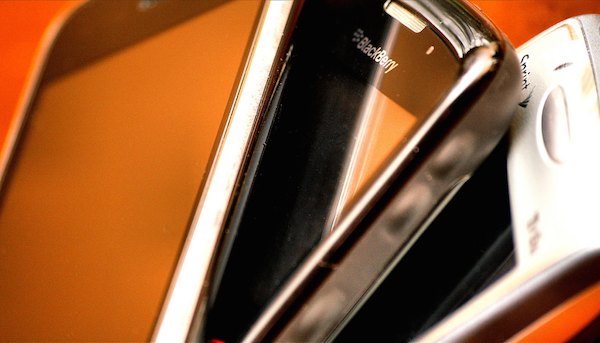
[Image above] Credit: Phil Roeder; Flickr CC BY 2.0
Headline inspiration goes to Daft Punk.
While early glass was made from sand, the evolution of glass ever since has had one exponential upward trajectory.
Glass today is so much more than just a conveniently clear substrate—advanced glasses have been engineered to make devices smarter and afford new properties, like the ability to nix glare, reflection, and grime—properties many of us probably assumed were unavoidable when it comes to glass.
Master-of-glass Corning Inc. has just introduced a new glass composition optimized for high-performance displays called Lotus NXT.
According to a Corning press release, Lotus NXT “provides industry-leading levels of low total pitch variation—a metric that is essential to efficient panel manufacturing for high-resolution displays. It can outperform incumbent products using this metric by up to 60 percent.”
For those on the other end of manufacturing, the new Lotus glass translates into displays with higher, crisper resolution and longer battery life. Corning puts those figures at 100 pixels/in. higher resolutions and 15% less power consumption, according to the release.
Hear more about the new Lotus NXT from John P. Bayne, Corning VP and GM of High Performance Displays and Advanced Glass Innovations, in this short Corning video.
But what about when you want a glass device screen that not only provides a good display, but also can stand up to daily drops, scratches, and all-around abuse?
Researchers at Oak Ridge National Lab have an answer—they have developed a new durable, antireflective, superhydrophobic glass coating that offers important improvements over its predecessors.
And the inspiration for this multifunctional coating? Nature itself.
“While lotus leaves repel water and self-clean when it rains, a moth’s eyes are antireflective because of naturally covered tapered nanostructures where the refractive index gradually increases as light travels to the moth’s cornea,” Tolga Aytug, ORNL researcher and the study’s lead author, says in an ORNL press release. “Combined, these features provide truly game-changing ability to design coatings for specific properties and performance.”
You may recall Corning’s antiglare, antireflective, and superhydrophobic glass that I reported on last August.
Corning’s technology engineered a nanostructured glass surface—rather than a separate coating—using masked etching and sputter coating to achieve a superhydrophobic surface with contact angles greater than 150 degrees.
However, although the glass also had antiglare and antireflective properties on its résumé, its biggest problem was durability, according to a phone interview at the time with Corning scientist and division vice president Joydeep Lahiri.
ORNL’s new coating solves this problem by adding some much-needed durability to the mix.
“This quality differentiates it from traditional polymeric and powder-based counterparts, which are generally mechanically fragile,” Aytug says. “We have shown that our nanostructure glass coatings exhibit superior mechanical resistance to impact abrasion—like sand storms—and are thermally stable to temperatures approaching 500 degrees Celsius.”
Coupled with an improved contact angle of 155–165 degrees, the new coating offers superior protection against dirt, assault, and reflection.
To fabricate the glass super-coating, ORNL scientists came up with a method that could be scaled up easily and inexpensively for a transition to industry—another problem that plagued Corning’s super surface.
“We developed a method that starts with depositing a thin layer of glass material on a glass surface followed by thermal processing and selective material removal by etching,” Aytug says in the release. “This produces a surface consisting of a porous three-dimensional network of high-silica content glass that resembles microscopic coral.”
Because the method produces a 3-D nanoporous structure, the coating can suppress Fresnel light reflected from the glass surface. If applied to solar panels, the coating’s ability to reduce reflected light translates to a 3%–6% increase in efficiency and power output, according to the release.
The researchers suggest other possible applications are goggles, periscopes, optical instruments, photodetectors, sensors, and more.
The paper, published in Journal of Materials Chemistry C, is “Monolithic graded-refractive-index glass-based antireflective coatings: broadband/omnidirectional light harvesting and self-cleaning characteristics” (DOI: 10.1039/C5TC00499C).
In other glass news, Schott has also developed its own durable, antiglare surface coatings, which the company dubs Hard & Clear.
Although details about what exactly the coating is made of are scant, the company says the surface coating can increase scratch resistance by 95% and reduce glare by 85%, although these properties come separately in two different coating formulations.
Similarly to self-cleaning paint we reported on earlier this year, Schott put the Hard & Clear coatings to the test with the ultimate abuse—abrasion tests with steel wool and extra-harsh corundum sandpaper. Ouch.
“The results of the testing are conclusive: With a reduction of more than 95 percent in scratches, any cover glass treated with our innovative coatings will outperform all other products available,” Lutz Gruebel, Schott’s head of cover glass sales and marketing, says in a Schott press release.
What do you think—where will glass go next?
Author
April Gocha
CTT Categories
- Electronics
- Glass
- Material Innovations
- Nanomaterials
- Optics



